Harold Baskerville Williams was born in South Wales on 26 June 1889. He graduated from the Royal Veterinary College and became a Member of the Royal College of Veterinary Surgeons on 25 March 1915. Commissioned as a Lieutenant on probation in the Special Reserve of Officers of the Army Veterinary Corps on 26 March 1915 he landed in France only six days later on 1 April. He served in the European Theatre of World War I until mid-1918 when he was transferred to the Egyptian Expeditionary Force in Middle East Command. His main role was to ensure the health and welfare of the many thousands of transport and cavalry animals which served in the war. He was Mentioned in Despatches early in 1918 by the Commander in Chief of the British Forces in Europe. He received a second Mention in Despatches at the beginning of 1919 from the Commander in Chief of the Egyptian Expeditionary Force and was appointed an Officer in the Military Division of the Noble Order of the British Empire in the middle of 1919. Transferred to Sudan he served in the country from 1919 until 1940. Captain Williams was first a Veterinary Inspector working mainly in the western province of Kordofan until the middle of 1934 where his work was control of the major livestock diseases, especially Rinderpest, Contagious Bovine Pleuro-Pneumonia, Trypanosomosis and Foot and Mouth Disease. He resigned from the Royal Army Veterinary Corps in 1925 but continued in the military on his transfer to the Sudan Defence Force. He was awarded the Order of the Nile (Fourth Class) by the King of Egypt in 1933. Promoted to Director of Veterinary Services in October 1934 he occupied that position, in which he oversaw all veterinary services in Sudan, until retirement in 1940. Re-enlisted into the Veterinary Corps during the Second World War (when he was promoted to War Substantive Major) he served in various capacities. He finally ceased to be on the Reserve of Officers on 4th January 1946 on account of an unspecified disability and was granted the honorary rank of Lieutenant-Colonel. Williams died in London on 1 May 1966 aged 77.
animal diseases, royal army veterinary corps, world war I, campaign medals, transport animals
Following the death of the charismatic Mahdi (“Guided One”) the Sudanese uprising against Egyptian rule (or more accurately misrule) in the 1880s the Khalifa (“Successor”) achieved victory over the Egyptian occupiers and resulted in Sudanese control of the country. An attempt to rescue the British General Gordon who had been sent by the United Kingdom to rally the country by a British expeditionary force was unsuccessful, Gordon was killed on the steps of his palace and Khartoum was captured by the Sudanese. A decisive victory by British military forces with some support from Egypt at the Battle of Omdurman on 3 September 1898 resulted in the reconquest of the country. A joint government by Egypt and Britain came into being as a Condominium known as the Anglo-Egyptian Sudan [1,2]. Enormous numbers of cavalry and transport animals (horses, mules, donkeys and camels) were required to govern and control the turbulent population. A veterinary service was established to ensure the health of these animals. (Sudan was the seventh of all tropical countries to establish a veterinary service and the fourth in Africa after Zimbabwe (1890), Lesotho (1896) and Kenya (1897) [3]). In all, 12 people served as Principal Veterinary Officers (to 1910) or as Directors of Veterinary Services (1910-1956) in the 55-year being of the Anglo-Egyptian Sudan before independence as the Republic of Sudan on 1 January 1956. In the early years the small number of veterinarians were military officers who were seconded, usually for short periods, from the British to the Egyptian Army which in turn employed them directly or seconded them to the Sudan. The first seven heads of veterinary services were all British military personnel but in the early 1920s the British War Office decided it would no longer maintain this arrangement. Harold Baskerville Williams was the ninth (and second civilian) director serving in that capacity from 1934 to 1940.
Early life, 1889-1915
Harold Baskerville Williams was born on 26 June 1889 in Carmarthen, South Wales [4]. At the census of 1891 the young Williams, aged 1, was living with his parents David and Sophia in Napier House at 13 Spillman Street where he was the youngest of five children. The household also boasted two nurses, two laundry maids and a general servant. The laundry maids no doubt worked next door at Number 12 which was (and is) The Ivy Bush Royal Hotel (Figure 1) which was owned by Harold’s father [5].
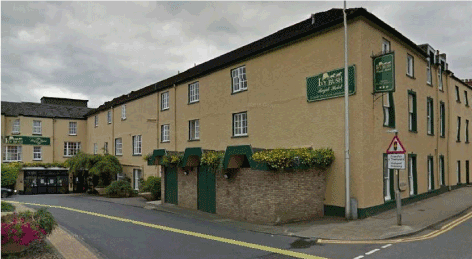
Figure 1. The Ivy Bush Royal Hotel in Carmarthen owned by the Williams family.
Harold was not with his family in 1901 but was a Boarder, together with is eldest brother Charles, in the household of a Laura Leaman at 48 Trinity Square, Lambeth [6]. Moving on to 1911 Harold Baskerville Williams aged 21 is a Veterinary student in the household of Wilfrid Waters, himself a Veterinary Surgeon, situated in Norwich Road, Blofield, Norwich [7]. Williams graduated from Royal Veterinary College in 1915 and became a Member of the Royal College of Veterinary Surgeons (MRCVS) on 25 March 1915 [8].
First World War, 1915-1919
It seems probable that Williams volunteered for the Special Reserve of Officers in 1912 via the Officers' Training Corps (OTC) of the Royal Veterinary College[1]. Reservists were called up on the outbreak of the First World War on 4 August 1914 but Williams’ entry into the Army was most likely deferred for him to complete his veterinary training. He was made a Lieutenant on probation in the Army Veterinary Corps on the day after his entry into the Royal College of Veterinary Surgeons as a Member (MRCVS) [9]:
|
War Office,
13th April 1915
SPECIAL RESERVE OF OFFICERS
ARMY VETERINARY CORPS.
The undermentioned to be Lieutenants (on probation): —
Dated 26th March 1915.
Harold Baskerville Williams
|
He was very quickly sent to where the action was and landed in France 1 April 1915 [10]. This qualified him for the award of the 1914-1915 Star which was awarded to officers and men of British and Imperial forces who served against the Central European Powers in any theatre of the Great War between 5 August 1914 and 31 December 1915. Being awarded this medal also qualified him for receipt of the British War Medal and the Allied Victory Medal (Figure 2) [10]. His main role during the war was to ensure, insofar as possible, the health and welfare of the many thousands of cavalry and transport animals that were involuntarily involved in the hostilities. Towards the end of the war he received a Mention in Despatches from the Commander in Chief of the British Forces in France and Belgium which also entitled him to wear an Oak Leaves emblem on the ribbon of his Allied Victory Medal [11]:
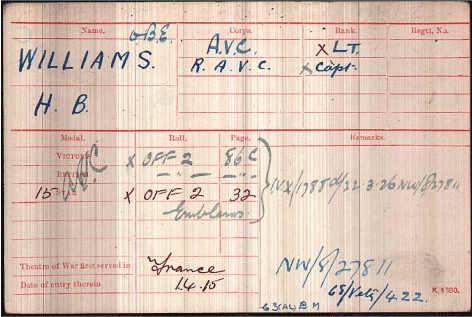
Figure 2. Medal Index Card of Harold Baskerville Williams showing entitlements to World War I campaign medals.
|
War Office
20th May 1918
The following is a continuation of SIR D Haig's despatch of the 7th April, submitting names deserving of special mention —
ARMY VETERINARY CORPS (S.R.).
Williams, Capt. H. B.
|
Having received a Mention in Despatches for his service in France, probably at the Battle of Cambrai or the Second Battle of the Somme Williams was transferred to the Egyptian Expeditionary Force in Middle East Command. He was now present in Egypt and Israel during or around the time of the Battle of Megiddo. This was fought between 19 and 25 September 1918 on the Plain of Sharon, in front of Tulkarm, Tabsor and Arara in the biblical Hills of Judea as well as on the Esdralon Plain at Nazareth and in the advance o the holy city of Jerusalem. The battle during which the Ottoman (Turkish) forces were utterly routed was the final Allied offensive of the Sinai and Palestine Campaign of the First World War. On the British side there were12 000 mounted troops as well as a multitude of animals involved in transport and supply operations whose health and welfare were paramount for the success of the operations. Some of these animals had been sent from Sudan, whither Captain Williams was shortly to find himself. For his service here he was to get a second Mention in Despatches. That, however, was soon complemented by an appointment of a much more prestigious kind to be an Officer of the Military Division of the Most Excellent Order of the British Empire [12,13]:
|
War Office,
5th June 1919.
The following despatch has been received by the Secretary of State for War from General Sir E. H. H. Allenby, G.C.B., G.C.M.G., Commander-in-Chief, Egyptian Expeditionary
Force: —.
General Headquarters,
5th March 1919.
Sir,
I have the honour to forward herewith a list of Officers, Nurses, Other Ranks and Civilians, whom I consider worthy of mention for their services during the period from the 19th September 1918, to the 31st January 1919.
I have the honour to be,
Sir,
Your most obedient servant,
H. H. ALLENBY,
General.
Commander-in-Chief,
Egyptian Expeditionary Force.
ROYAL ARMY VETERINARY CORPS.
Williams, Capt. H. B. (S.R.).
|
|
CENTRAL CHANCERY OF THE ORDERS OF KNIGHTHOOD.
St. James's Palace, S.W:
3rd June 1919.
'The KING has been graciously pleased, on the occasion of His Majesty's Birthday, to give orders for the following promotions in, and appointments to, the Most Excellent Order of the British Empire for valuable services rendered in connection with Military Operations in Egypt: —
To be Officers of the Military Division of the said Most Excellent Order: —
Williams, Capt. Harold Baskerville,.R.A.V.C. (S.R.)[2].
|
In the middle of 1919 Captain Harold Baskerville of the Royal Army Veterinary Corps Special Reserve was transferred to the Regular Army [14]:
|
ARMY VETERINARY SERVICE. R.A.V.C.—The undermentioned to be Capts. 10th July 1919:
From Capts., Spec. Res.—
Harold Baskerville Williams, O.B.E.
|
Sudan, 1920-1940
Harold Baskerville Williams arrived for duty in Sudan on 14 April 1920 although for an unknown reason he does not appear in regular issues of the Sudan Government monthly return of senior officials, Sudan government, and British officers temporarily employed in Sudan government service until 1 January 1927 [15]. He is then listed (Table 1) as a Veterinary Inspector as El Bimbashi H B Williams OBE working in Khartoum Province (i.e. not stationed at Khartoum headquarters)[3]. Following his initial posting in Khartoum Province he was transferred to the western – and in terms of livestock numbers and the livestock industry extremely important – province of Kordofan at the beginning of 1928. He was to remain here for more than six years until his promotion to Director in the middle of 1934 when his predecessor William Kennedy left the service.
During his early years in Sudan Williams continued to enjoy the benefits – amongst all the difficulties and harsh conditions of the country – of expatriate postings in the Sudan. He was entitled, for example, to an annual period of home leave of three months. On one such occasion he travelled First Class on the SS Yorkshire of the Bibby Line sailing from Liverpool on 15 September 1922 bound for Port Said. He was listed among the passengers as a Captain in the Regular Army, age 33, his last address being May Bank, Aberdovey [16]. Williams was home again in 1924 and took advantage of this occasion to marry Alice M Reese in his hometown of Carmarthen [17]. Both parties to the marriage were 35 years old and born within a few days of each other: he on 26 June 1889 and she on 22 June 1889.
Almost certainly as a consequence of the decision of the British War Office in 1924 to no longer second officers to the Egyptian Army Captain Williams retired from the British Army on 1925 and received a gratuity for his services; his successor as Director of Veterinary Services Claude Percy Fisher many year later, resigned at the same time [18,19]:
|
War Office,
14th July1925.
REGULAR FORCES.
ROYAL ARMY VETERINARY CORPS.
The undermentioned Capts. retire, receiving a gratuity. 15th July 1925.
C. P. Fisher.
H. B. Williams, O.B.E.
|
Williams retirement had little practical effect as he transferred to the Sudan Defence Force and continued to serve, as before, as a Veterinary Inspector. Nor did this change affect his privileges. As he continued to enjoy his acquired benefits including annual leave to England. His wife Mrs H B Williams aged 37, for example, who had been living at 7 The Esplanade, Carmarthen (Figure 3) left Liverpool on 2 October 1926 on board the City of Simla, travelling First Class of course, bound for Port Sudan [20].
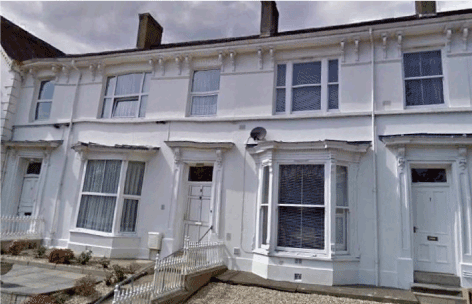
Figure 3. Number 7, The Esplanade, Carmarthen, an address used by the Williams in the 1920s.
For much of 1927 (when he begins to appear on the monthly return of officers) Veterinary Inspector El Bimbashi H. B. Williams OBE was based in Khartoum Province (Table 1). At the beginning of 1928, however, his duty station was Kordofan which, as already indicated, was a major repository of Sudan’s livestock wealth. He remained in Khartoum until his promotion to Director in 1934 and was promoted locally to the rank of El Kaimakan, which was accompanied by Egyptian honorary title of bey. He (and his wife) did of course continue to benefit from an annual home leave (Table 1). In 1930 H B Williams, a Sudan Government Official and Mrs Alice M Williams travelled First Class on the SS Lancashire of the Bibby Bros Line from Port Sudan to London where they arrived on 11 April. where their address was 3 Whitehall Place, London (Figure 4)[4]. The following year Captain H B Williams, employed by the Sudan Government, and Mrs Williams travelled First Class on the SS Worcestershire of the Bibby Line from Port Sudan to London where they arrived on 15 May before going to their address at 38 Parkside, Albert Gate, London (Figure 5)[5].
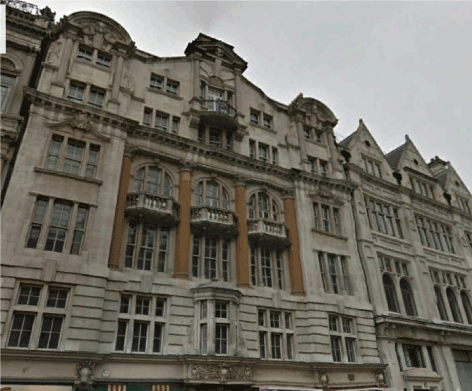
figure 4. Number 3 Whitehall Place, a probable accommodation address for Williams on leave
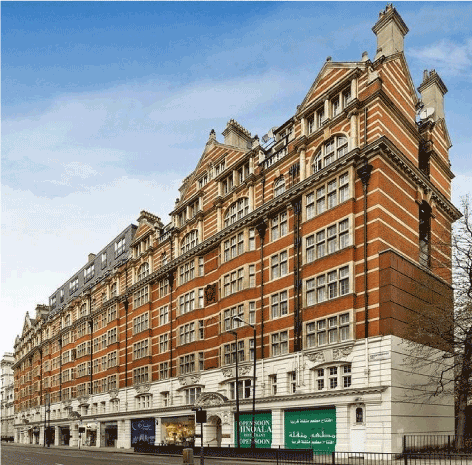
Figure 5. Parkside Mansions facing Hyde Park, London, where the Williams’ stayed on several occasions
El Kaimakan Williams’ contribution to the Sudanese livestock sector was recognized in 1933 when he was awarded one of Egypt’s highest honours by the king of that country [21]:
|
Whitehall, September 25, 1933
The KING has been pleased to give and grant unto the under-mentioned British officials in the service of the Sudan Government His Majesty's Royal licence and authority to wear Decorations conferred upon them by His Majesty the King of Egypt, in recognition of valuable services rendered by them: —
Insignia of the Fourth Class,
Captain Harold Baskerville Williams, O.B.E.,Veterinary Inspector.
|
In the early part of 1934 Williams was on a Tour of Duty to Khartoum Provinces (Table 1). It is likely that this was a preparatory exercise to his being appointed Director. Then in the return of officers for July 1934 there is the first intimation that he is to be Director. He was then back in Kordofan Province but due to depart on leave on 22 July and is noted that he is Director Designate (Table 1).
Table 1. Outline of the Sudan career of Harold Baskerville Williams, 1920-1940
Date |
Appointment |
Rank and name |
Location |
Notes |
14 April 1920 |
|
|
|
Arrived in Sudan |
1 January 1927 |
Veterinary Inspector |
El Bimbashi H B Williams OBE |
Khartoum Province |
|
1 July 1927 |
Veterinary Inspector |
El Bimbashi H B Williams OBE |
Khartoum Province |
For leave |
1 October 1927 |
Veterinary Inspector |
El Bimbashi H B Williams OBE |
|
From leave 15 October |
1 January 1928 |
Veterinary Inspector |
El Bimbashi H B Williams OBE |
Kordofan Province |
|
1 July 1928 |
Veterinary Inspector |
El Kaimakan H B Williams Bey OBE |
Kordofan Province |
|
1 July 1929 |
Veterinary Inspector |
El Kaimakan H B Williams Bey OBE |
Kordofan Province |
From leave 29 July |
1 October 1929 |
Veterinary Inspector |
El Kaimakan H B Williams Bey OBE |
Kordofan Province |
|
1 July 1930 |
Veterinary Inspector |
El Kaimakan H B Williams Bey OBE |
Kordofan Province |
|
1 October 1930 |
Veterinary Inspector |
El Kaimakan H B Williams Bey OBE |
Kordofan Province |
|
1 January 1931 |
Veterinary Inspector |
El Kaimakan H B Williams Bey OBE, MRCVS |
Kordofan Province |
|
1 April 1931 |
Veterinary Inspector |
Captain H B Williams Bey OBE, MRCVS |
Kordofan Province |
|
1 July 1931 |
Veterinary Inspector |
Captain H B Williams Bey OBE, MRCVS |
Kordofan Province |
From leave 5 August |
1 January 1932 |
Veterinary Inspector |
Captain H B Williams Bey OBE, MRCVS |
Kordofan Province |
|
1 April 1932 |
Veterinary Inspector |
Captain H B Williams OBE, MRCVS |
Kordofan Province |
|
1 July 1932 |
Veterinary Inspector |
Captain H B Williams OBE, MRCVS |
Kordofan Province |
For leave 24 July |
1 October 1932 |
Veterinary Inspector |
Captain H B Williams OBE, MRCVS |
Kordofan Province |
From leave 28 October |
1 January 1933 |
Veterinary Inspector |
Captain H B Williams OBE, MRCVS |
Kordofan Province |
|
1 April 1933 |
Veterinary Inspector |
Captain H B Williams OBE, MRCVS |
Kordofan Province |
For leave 16 April |
1 July 1933 |
Veterinary Inspector |
Captain H B Williams OBE, MRCVS, 4 Nile |
Kordofan Province |
From leave 23 July |
1 October 1933 |
Veterinary Inspector |
Captain H B Williams OBE, MRCVS, 4 Nile |
Kordofan Province |
|
1 January 1934 |
Veterinary Inspector |
Captain H B Williams OBE, MRCVS, 4 Nile |
Kordofan Province |
|
1 April 1934 |
Veterinary Inspector |
Captain H B Williams OBE, MRCVS, 4 Nile |
Kordofan Province |
T.D. Khartoum Prov |
1 July 1934 |
Veterinary Inspector |
Captain H B Williams OBE, MRCVS, 4 Nile |
Kordofan |
For leave 22 July; Director Designate |
1 October 1934 |
Director |
Captain H B Williams OBE, MRCVS, 4 Nile |
Khartoum |
1 January 1935 |
Director |
Captain H B Williams OBE, MRCVS, 4 Nile |
Khartoum |
|
1 April 1935 |
Director |
Captain H B Williams OBE, MRCVS, 4 Nile |
Khartoum |
T.D. south; April/May |
1 October 1935 |
Director |
Captain H B Williams OBE, MRCVS, 4 Nile |
Khartoum |
From leave 13 October |
1 January 1936 |
Director |
Captain H B Williams OBE, MRCVS, 4 Nile |
Khartoum |
|
1 April 1936 |
Director |
Captain H B Williams OBE, MRCVS, 4 Nile |
Khartoum |
For leave 9 April |
1 July 1936 |
Director |
Captain H B Williams OBE, MRCVS, 4 Nile |
Khartoum |
From leave 14 July |
1 October 1936 |
Director |
Captain H B Williams OBE, MRCVS, 4 Nile |
Khartoum |
|
1 January 1937 |
Director |
Captain H B Williams OBE, MRCVS, 4 Nile |
Khartoum |
|
1 April 1937 |
Director |
Captain H B Williams OBE, MRCVS, 4 Nile |
Khartoum |
For leave 26 April |
1 July 1937 |
Director |
Captain H B Williams OBE, MRCVS, 4 Nile |
Khartoum |
From leave 27 July |
1 October 1937 |
Director |
Captain H B Williams OBE, MRCVS, 4 Nile |
Khartoum |
|
1 January 1938 |
Director |
Captain H B Williams OBE, MRCVS, 4 Nile |
Khartoum |
|
1 April 1938 |
Director |
Captain H B Williams OBE, MRCVS, 4 Nile |
Khartoum |
TD in Provinces |
1 July 1938 |
Director |
Captain H B Williams OBE, 4 Nile, MRCVS |
Khartoum |
For leave 7 July |
1 January 1939 |
Director |
Captain H B Williams OBE, 4 Nile, MRCVS |
Khartoum |
|
1 April 1939 |
Director |
Captain H B Williams OBE, 4 Nile, MRCVS |
Khartoum |
|
1 July 1939 |
Director |
Captain H B Williams OBE, 4 Nile, MRCVS |
Khartoum |
For leave 16 July |
1 October1939 |
Director |
Captain H B Williams OBE, 4 Nile, MRCVS |
Khartoum |
|
1 January 1940 |
Director |
Captain H B Williams OBE, 4 Nile, MRCVS |
Khartoum |
|
1 April 1940 |
Director |
Captain H B Williams OBE, 4 Nile, MRCVS |
Khartoum |
|
1 July 1940 |
Director |
Captain H B Williams OBE, 4 Nile, MRCVS |
Khartoum |
Retiring |
Source: [15] plus later issues of dates shown in first column
During the 14-year period that Williams was a Veterinary Inspector the Veterinary Services had made a great deal of progress, transforming itself from an essentially supporting service for transport animals to a fully fledged preventative and curative agency not only for transport stock but for the country’s ruminant animals which not only provided food for internal consumption but also as an important mediator in exporting animals to generate revenue. The so-called Research Section initiated in 1913 had done little other than routine diagnoses until the arrival of Captain R H Knowles as Veterinary Research Officer in 1922. He started to carry out proper research and his team was strengthened in 1925 by the arrival of S C J Bennett as Assistant Veterinary Research Officer [22,23]. With the arrival of Bennett experimental work was much more thorough. Vaccines and prophylactic and curative measures against Contagious Bovine Pleuro-pneumonia (CBPP) and Rinderpest reduced the mortality rate in some areas and were especially useful in allowing exports of cattle to Egypt to continue. Efforts were also made to control and cure camel trypanosomosis. A vaccine institute was established at Malakal as a counter measure to the import of vaccines. With limited staff and restricted mobility (the more widespread use of motor transport from 1928 improved this situation) it was not possible to control all the disease problems as many outbreaks were in the remote provinces of Kordofan and Darfur. Thus, although some success was achieved in areas where the Veterinary Department had access it could not be claimed that serum treatment had greatly reduced deaths in Darfur [24].
Quarantine stations had been set up along the main trade routes and at the frontier export places both inland and at the seaports, more veterinary stations had been put in place and early extension efforts were made to encourage producers to adopt better feed, health and management practices [25]. Williams immediate predecessor as Director, William Kennedy [26] also wanted to improve the genetic quality of local cattle and in 1927 he considered [27]:
|
that the best results will be obtained by breeding from selected local types. At the same time, the possibility of improving the breed of cattle by the introduction of imported blood, to areas where grazing and water are plentiful, has not escaped attention, and five young bulls bred from native cows by pure-bred imported bulls– four by a Friesan bull and one by a Dairy Shorthorn bull --have recently been sent to the Upper Nile Province.
|
A horse improvement scheme had been set up in Darfur and Kordofan Provinces in 1926 [28,29]. The next year it was reported [27]:
|
Considerable success has attended the Government Scheme to improve the breed of horses in the Western Sudan, and the results so far obtained have surpassed all expectations. The rapid strides which have been made in Darfur Province, where as a tribute to the personality, tireless energy and boundless enthusiasm of the originator of the movement, the breeding operations are referred to as the 'Audas' Scheme, are mainly due to the whole-hearted support afforded by Administrative Officers and natives alike. Some 900 mares are now under definite breeding control, and at the forthcoming shows this number will by careful selection be increased to 1,000, which was the figure aimed at to put the scheme on a sound footing.
|
Stallion numbers built up and by 1929 there were 25 standing in Darfur of which three were English thoroughbreds, one an Egyptian thoroughbred, 18 Arabs and three Sudan countrybreds. Unfortunately, the early promise of the scheme was not fulfilled as it appeared that the later generations of progeny could not cope with the harsh environment and the management conditions of their nomadic owners.
The global depression of the late 1920s and 1930s coincided with years of poor or moderate rains and difficult grazing conditions over most of the central Sudan. The worst epizootic of rinderpest for many years broke out in 1930 with over 15 000 deaths - nearly half in Kordofan Province - reported. Most of the main cattle producing areas were affected until the epizootic was brought under control in 1932. Matters might have been much worse had it not been for three important factors: first, the confidence of the cattle owners in the Department had increased and they were now regularly reporting disease occurrence; second, motor transport greatly appeased the burden on the Department from 1928; and, thirdly, local production of anti-rinderpest serum of small quantities of spleen-tissue vaccine proved beneficial. Although laboratory output never fully met the total demand sufficient serum was produced for reserves to be held at strategic points to ensure prompt action as fresh outbreaks were reported. Local authorities were also keen to have their own tribal staff and in 1929 the first tribal veterinary retainers had been trained and appointed and, as numbers grew, proved an invaluable addition to the field staff [22].
Thus, in 1934, the assumption by Captain Williams of post of Director of Veterinary Services was more propitious than that of any of his predecessors. The first anti-rinderpest serum was made in 1928 and production increased annually until by 1936 a total of 125 000 doses were available for use in the field. Spleen tissue vaccine against rinderpest was first produced in 1931 and came into regular production in 1935 when 41 000 doses were issued. This new addition to the armoury of control made the certain protection from rinderpest of all cattle registered for export possible. A vaccine against CBPP was also developed with about 50000 doses being produced every year [22].
Williams seems to have spent a little more time touring his outposts in the provinces than his predecessors had done. At the same time, he continued to benefit from his perquisites as a senior officer in the Sudan service coupled to his status as an expatriate. As a senior government officer, he would be provided with quality housing and access to an exclusive club for high officials. He continued to benefit from annual leave to England. In 1936, for example he and his wife travelled First Class aboard the SS Derbyshire of the Bibby Line arriving at Tilbury (London) on 24 April and going (again) to 38 Parkside, Knightsbridge, London [30].
In 1937 he was on leave from 26 April to 27 July, in 1938 he departed on leave on 7 July and then in 1939 went on leave again on 16 July (Table 1).
No information has been found on his return to Sudan in 1939 but he travelled back without his wife. On 29 September 1939Alice M Williams was not in Sudan with her husband but was living at 9 Quay Street Carmarthen (Figure 6) where at age 50 she was a Hospital Supply Worker affiliated to the Red Cross [31]. In the same dwelling were a Mister Frank Vestey and Mrs Mary V Vestey[6]. Captain H B Williams OBE, 4 Class Order of the Nile, MRCVS, the Director of the Sudan Veterinary Service at Headquarters in Khartoum retired in the summer of 1940 (Table 1).
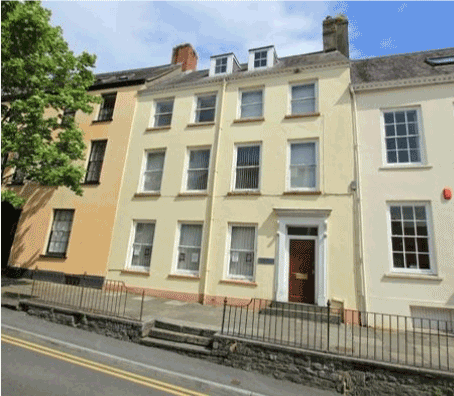
Figure 6. Number 9, The Quay, Carmarthen, the address of Mrs Williams in 1939
Later life, 1940-1966
Captain Williams was recalled to the RAVC in which he served in various capacities throughout World War II from 1940 to 1945. During this service he was promoted to Substantive War Major and was eligible for the award of three campaign medals – the Defence Medal, the War Medal 1939–1945 and the 1939-1945 Star (Figure 7). Early in 1946 his service in the Reserve of Officers was terminated but as a parting gift he was elevated to the honorary rank of Lieutenant Colonel [33]:

Figure 7. Honours and campaign medals gained by Harold Baskerville Williams, 1915 to 1945 (Officer of the Most Excellent Order of the British Empire, Military Division; 1914-15 Star; British War Medal 1914-18; Allied Victory Medal with Oak Leaves Emblem for Mention in Despatches; 1939-1945 Star; Defence Medal; British War Medal 1939-1945; Order of the Nile, Fourth Class)
|
REGIMENTAL LIST.
REGULAR ARMY RESERVE OF OFFICERS.
ROYAL ARMY VETERINARY CORPS.
Capt. (War Subs. Maj.) H. B. WILLIAMS, O.B.E. (11336), ceases to belong to the Res. of Offers., 4th Jan. 1946, on account of disability, and is granted the hon. rank of Lt.-Col.
|
In the period 1946 to1952 Mr Harold and Mrs Alice Williams lived with the Honourable Frank and Mrs Mary Vestey at The Grange, Marle Hill, Evesham Road, Prestbury, Cheltenham (Figure 8) [34][7]. Later in the 1950s and in the 1960s the Williams moved, in the company of Harold’s cousin Mary, to another prestigious property at 80 Ashley Gardens in Knightsbridge (Figure 9), opposite the world-famous Harrod’s Department store [35][8]. Throughout this latter period Mary Vera Vestey used her courtesy title of The Honourable Mary V Vestey. Alice M Williams died aged 70 towards the end of 1959 [36]. Harold Williams continued to live with Mary Vestey until he died at 80 Ashley Gardens Westminster, approaching his 77th birthday, on 1 May 1966 [37]. Probate of his effects of £2293 was granted to Glyns Executor and Trustee Company [38][9]. The Honourable Mary V Vestey, cousin of Harold Baskerville Williams and with whom she had maintained a lifelong close relationship died aged 80 at Ashley Gardens on 10 June 1972 [39] leaving effects of effects £84 361 [40].
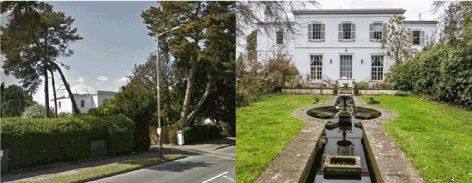
Figure 8. The Grange, Marle Hill, Cheltenham where M and Ms Harold Williams live during the 1950s with Harold’s cousin Mary Vestey
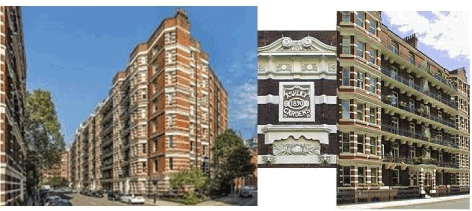
Figure 9. General views of Ashley Gardens in Westminster, London where Williams spent the last years of his life with his wife and cousin Mary Vestey
[1] The Special Reserve was established on 1 April 1908 in order to maintain a reservoir of manpower for the British Army and for training replacement drafts in times of war. Its formation was part of the military reforms that were being implemented at the time. Enlistment was for six years of service. An initial period of six months of basic training was undergone on recruitment followed by three to four weeks training each year afterwards. Officers were recruited to a new Special Reserve of Officers many of whom were in Officers' Training Corps (OTC) based on universities.
[2] The Most Excellent Order of the British Empire is an order of chivalry established on 4 June 1917 by King George V. It was awarded for contributions to the arts and sciences, to work with charitable and welfare organisations and to public service outside the civil service. On 27 December 1918 a military division was instituted within the Order whose insignia would be distinguished by adding a vertical red stripe to the centre of the riband. Williams received his OBE along with many thousands of other people in the King’s Birthday Honours, for which no individual citations were made. An Officer ranks above a Member (MBE) but below a Companion (CBE), a Knight or Dame (KBE, DBE) and a Knight or Dame Grand Cross (KGBE, DGBE).
[3] Bimbashi was an Egyptian Army rank equivalent to a British Major: officers seconded from Britain to Egypt were invariably given local ranks more senior than their British substantive ones. His promotion to the Egyptian Army rank of Kaimakan (equivalent to a Lieutenant Colonel in the British Army) and the granting of an honorary title “Bey” whilst still a substantive Captain and whilst still a Veterinary Inspector serving in Kordofan is somewhat unusual.
[4] Whitehall Place was almost certainly an “accommodation” address: situated just off Trafalgar Square in Westminster it has been occupied since February 2017 by the British government’s Department of International Trade.
[5] 38 Parkside is a flat (apartment) in a late 19th century purpose-built-for-long-term-leasing-to-the-nobility-and-super-rich mansion block that overlooks Hyde Park in one of the (still) most sought after residential locations in London: its estimated value in 2019 is GBP5.9 million.
[6] Frank and Mary Vestey are also listed for 1939 on the Electoral Register for Westminster at 38 Parkside [32]. Frank Vestey had been granted special leave in 1918 so he could marry Marie Vera Buckie in the Baptisy Chapel in Carmarthen. In the 1920s the Vestey couple had travelled to Sudan on at least two occasions and in other years had spent time on cruises in the Caribbean. On these occasions Frank had been listed as a Farmer but in 1939 he was said to be “Incapacitated”. They were listed in the Westminster Electoral Registers as early as 1931 at 38 Parkside and it appears, they were the owners of the lease on that flat. Mary Vestey was a cousin of Harold Williams. The Honourable Frank Vestey was the fourth son of the First Lord Vestey of Kingswood in the County of Surrey, the Barony being created on 20 June 1922. The Vestey family was once believed to be the richest family in the United Kingdom: it owned large tracts of land in Brazil and Venezuela as well as Australia and New Zealand where it ranched cattle and sheep which were transported to the UK on its main shipping line, the Blue Star Line, for its Union Cold Storage Company slaughtering and distribution activities to its chains of retail butchers shops throughout the UK. It also had large business interests in Argentina which Frank and his wife visited in 1933, travelling First Class in one of the family-owned ships. The family was notorious for its ability to create schemes to avoid paying taxes on its capital and income. The author of this paper was offered a position as a Ranch Manager on one of the Vestey properties in Brazil but, exceedingly tempted, refused the offer and deferred to his wife’s desire to live and work somewhere else.
[7] This rented property was close to the 5500-acre Vestey family estate at Stowell Park. Frank died (one source says he “disappeared”) on 22 July 1950. Probate of his effects of £37 952 5sh 1d (a tidy sum!) was granted to his father the First Lord Vestey and his eldest brother who was to become the Second Lord Vestey: that is, his money went back into the family business.
[8]Ashley Gardens comprised five original mansion blocks each with 14 flats, built from 1890 using part of the land bought by Cardinal Manning for the new Roman Catholic Cathedral. The balconies from the reception rooms look out over Westminster Cathedral and its Piazza and on the other side the windows of the bedrooms look out over the Gardens with tall trees. In 1893 George Bernard Shaw wrote a play beginning with the first-act stage direction "A lady and gentleman are making love to one another in the drawing-room of a flat in Ashley Gardens". Thomas Hardy spent the summer in Ashley Gardens in 1895, W. Somerset Maugham described Ashley Gardens in The Moon and Sixpence in 1919. During World War II, General Eisenhower came to plan the D-Day invasion in the drawing rooms of Ashley Gardens, requisitioned for the duration. In 2019 a 2-bedroom flat in the Mansions would cost up to £2 million leasehold.
[9]Glyn’s Trustee Company was part of Glyn’s Bank, an entity used by many military officers to handle their salaries and other financial affairs whilst they were absent from the United Kingdom on duty.
- Churchill WS (1899) The River War (2 vols). Eyre and Spottiswoode Ltd, London.
- Colville HE (1889) History of the Sudan Campaign (two volumes). Her Majesty’s Stationery Office, London.
- Smith, J (1973) A history of the overseas veterinary services: Part Two. British Veterinary Association, London.
- GRO (1889) England and Wales Civil Registration Indexes, Births. Carmarthen Jul-Aug-Sep 1889 11a 942. General Register Office, London.
- PRO (1891) Census Returns of England and Wales, 1891. RG12 4517. Public Record Office, National Archives of the UK, Kew.
- PRO (1901) Census Returns of England and Wales, 1901. RG13 424. Public Record Office, National Archives of the UK, Kew.
- PRO (1911) Census Returns of England and Wales, 1911. RG14PN11374 RG78PN619 RD228 SD1 ED5 SN6. Public Record Office, National Archives of the UK, Kew.
- Clare Boulton, Head of Library and Information Services RCVS Knowledge, Personal Communication, 22 April 2017.
- London Gazette (1915) https://www.thegazette.co.uk/London/issue/29127/page/3586.
- War Office (1914-1920) WWI Service Medal and Award Rolls; Class: WO 329; Piece Number: 2955; Reference: WO 372/21/191554. The National Archives of the UK, Kew.
- London Gazette (1918) https://www.thegazette.co.uk/London/issue/30704/supplement/6176.
- London Gazette (1919) https://www.thegazette.co.uk/London/issue/31383/supplement/7189.
- London Gazette (1919) https://www.thegazette.co.uk/London/issue/31371/supplement/6925.
- London Gazette (1919) https://www.thegazette.co.uk/London/issue/31447/supplement/8800.
- Sudan Government (1927) Monthly return of senior officials, Sudan government, and British officers temporarily employed in Sudan government service, showing appointments & stations on 1 January 1927 and probable moves during the month. Khartoum, Sudan.
- National Archives (1922) Board of Trade: Commercial and Statistical Department and successors: Outward Passenger Lists.; Class: BT27. National Archives of the UK, Kew.
- GRO (1922) England and Wales Civil Registration Indexes, Marriages. Carmarthen, Apr-May-June 1924, 11a 2433. General Register Office, London.
- London Gazette (1925) https://www.thegazette.co.uk/London/issue/33066/page/4702.
- Wilson RT (in preparation) Directors of Veterinary Service in the Anglo-Egyptian Sudan: Claude Percy Fisher (Director 1940-1944), 1918-1944.
- National Archives (1926) Board of Trade: Commercial and Statistical Department and successors: Outward Passenger Lists.; Class: BT27. National Archives of the UK, Kew.
- London Gazette (1933) https://www.thegazette.co.uk/London/issue/33982/page/6280.
- Jack JDM (1961) Part V The Sudan. In: West JP (ed) A History of the Overseas Veterinary Services Part One. British Veterinary Association, London, pp. 123-143.
- Tvedt T (1983) Colonial Technicians: The Sudan Veterinary Service 1898-1956. Thesis. University of Bergen, Bergen, Norway.
- Wilson RT (1979) The incidence and control of livestock diseases in Darfur, Anglo-Egyptian Sudan, during the period of the Condominium 1916-1956. Int J Afr Hist Stud 12: 162-182. [Crossref]
- Clabby J (1963) The history of the Royal Arm Veterinary Corps 1919-1961. J A Allen & Co, London.
- Wilson RT (in press) Directors of Veterinary Service in the Anglo-Egyptian Sudan: William (Bill) Kennedy) 1924-1934.
- Kennedy W (1925) Veterinary Department Annual Report 1925. Veterinary Department, Khartoum.
- Audas RS (n.d.) Horse breeding in the Sudan (SAD.479/10/5-12). Sudan Archive, Special Collection, Durham University, Durham.
- Wilson RT (1977) The horse improvement scheme in Darfur, Anglo-Egyptian Sudan: Policy and practice during the Condominium period 1916-1956. Sudan Notes and Records 58: 190-198.
- National Archives (1936) Board of Trade: Commercial and Statistical Department and successors: Inwards Passenger Lists; Class: BT26; Piece: 1096. National Archives, Kew.
- National Archives (1939)1939 Register; Reference: RG 101/7203F. National archives, Kew.
- LMA (1939). Electoral Register 1939, Westminster. London Metropolitan Archives, London.
- London Gazette (1946) https://www.thegazette.co.uk/London/issue/37419/supplement/234.
- GA (1946-1952) Gloucestershire Electoral Registers. Gloucestershire Archives, Gloucester.
- LMA (1958-1966) Electoral Registers. London Metropolitan Archives, London.
- GRO (1959) England and Wales Civil Registration Indexes, Deaths. Westminster, Oct-Nov-Dec 1959, 5c 326. General Register Office, London.
- GRO (1959) England and Wales Civil Registration Indexes, Deaths. Westminster Apr-May-Jun 1966 5e 13. General Register Office, London.
- PPR (1966) Calendar of the Grants of Probate and Letters of Administration made in the Probate Registries of the High Court of Justice in England, 1966. Principal Probate Registry, London.
- GRO (1959) England and Wales Civil Registration Indexes, Deaths. Westminster Apr-May-Jun 1972 5e 1897. General Register Office, London.
- PPR (1972) Calendar of the Grants of Probate and Letters of Administration made in the Probate Registries of the High Court of Justice in England, 1972. Principal Probate Registry, London.









